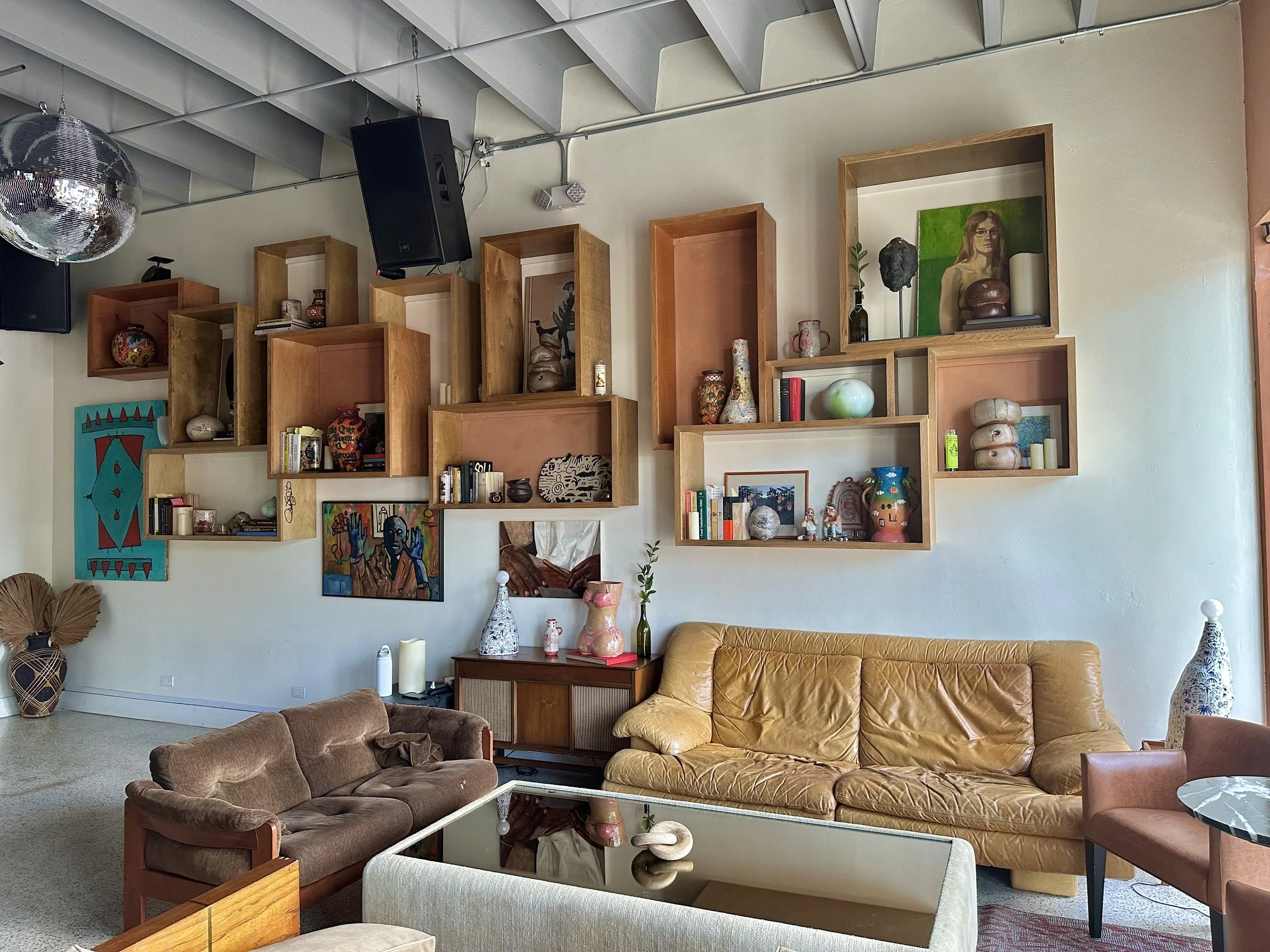Eso No Se Toca
Hannah Banciella, Noah Farid, Samantha Ferrer, Sarah Ferrer, Brett Olivieri, & Victor Urroz
June 27–August 24, 2024
Supermarket Gallery at
Hoy Como Ayer
Sometimes, it really is about trusting the whole “trust the process” process.
Scouting spaces as a nomadic gallery is a flexible endeavor—just because you’ve found a potential space for a potential exhibition, they may not align with everyone’s needs perfectly. Such is the case with Eso No Se Toca at La Sala at Hoy Como Ayer. Carrying exhibitions in my back pocket is a given, but I never know how long it’ll take to manifest them, and I also don’t ever know if they’ll come to pass.
The interesting thing about Eso No Se Toca is how fluidly it came together. Group exhibitions aren’t always easy, but a summer show is best known for ease, play, and connection-making. We’re lucky to have a diverse ceramics scene in the magic city, which was ultimately the reason we were able to pull off what is Supermarket’s best show yet.



Erin Parish,
ArtBurst
Erin captured the spirit of Eso No Se Toca with a sublime precision that made me teary-eyed. No frills, no pretense, and a gorgeous reflection on why this show is so meaningful during a precarious season—and I’m not referring to a sweltering summer in the 305.
Douglas Markowitz, Miami New Times
This is the third time a Supermarket exhibition has made it onto this monthly New Times list, and it’s special as an almost-lifelong reader. We’re always in fabulous company, and it feels good to not only be so well-received, but to know these projects resonate with our community
Eso No Se Toca, a group exhibition featuring Hannah Banciella, Noah Farid, Sarah Ferrer, Samantha Ferrer, Brett Olivieri, and Victor Urroz, features a curated selection of functional, decorative, and personality-driven sculptures and ceramic work. The exhibition’s title is a tribute to discipline, both the slap on the hand our parents gifted us when we got too close to something they thought we would break, and the time it takes to finish a single artwork. Eso No Se Toca refers not to rules and time-outs, but to ideas of rebellion, nostalgia, and a maddening desire to hold something precious or simply pretty; to touch what we aren’t supposed to.
Hand-crafted artwork like ceramic vessels, decorative sculptures, and functional objects have been part of the human experience for more than thirty-thousand years. More often than not, we approach three-dimensional work and ask what their purposes are—what they’re meant to do for us in our spaces. However, the artist and audience create the meaning of an artwork, whether the object itself is made to hold flowers, keep your morning cafecito warm, light up a room, or invoke the importance of a special occasion. In Eso No Se Toca, these artists are borrowing from their aesthetic perspectives, Miami’s unique local culture, and one of the oldest art forms in history to explore and communicate what matters to them.
Eso No Se Toca is about activating memories and cultural values in our shared hometown, and the purpose of art in daily life. The phrase conjures a vision of our moms with a slipper in their hand, the feeling of getting caught in a curious act. Yet, it reflects ideas about the act of living and the concept of legacy, specifically the magical and sometimes sneaky feeling in one’s chest when exploring the items in our homes collected by grandparents, gifted by visiting relatives, or found on the side of the road in perfect condition. We hold them when we receive them, and keep them behind a glass door or on a faux mantle so they last forever, never touching them again. Much like these kooky shared memories, Eso No Se Toca presents a collection of works touching on life cycles, self-image and understanding, what it means to love one another, and understand ourselves. Each artist imbues these souls into their work through their own inventive creativity. They mold these pieces by hand, giving them their own shapes and spirits. They pull from childhood and family histories, and remind us of the value of material culture and the souls we feed into even the most commonplace objects, especially when we have little else to grab onto.



